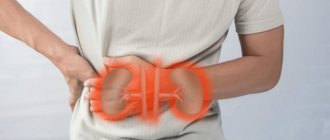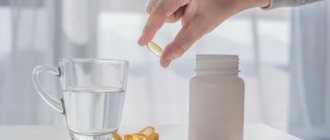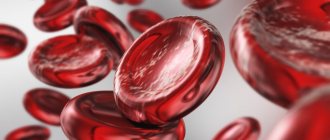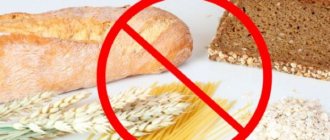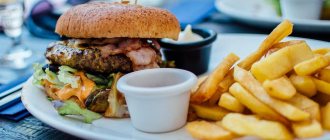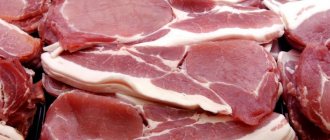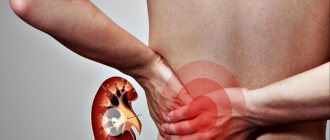Medical editor: Zemereva N.Yu., physiotherapist April, 2021.
Urolithiasis is a disease in which stones or stones form in the kidneys and urinary tract.
Stones can be of several types, and the dietary restrictions on certain foods depend on their composition. The composition of oxalate stones includes calcium salts formed from oxalic acid, respectively, in this case it is assumed that oxalic acid and vitamin C are limited. The composition of urates includes uric acid salts, which requires alkalization of urine. Phosphate stones are formed when the phosphorus-calcium regime is violated and require “acidification” of the urine, and cystine stones are formed from cystine (an amino acid).
Diet for escalate, urate and phosphate kidney stones
Urolithiasis is a common urological disease in which stones (calculi) form in the kidneys, ureter or bladder. The main reason for the formation of stones is metabolic disorders, so a proper diet is not only an indispensable form of effective treatment, but also the main prevention of urolithiasis. Very often, the presence of stones is detected during a kidney ultrasound, and the patient may not have any symptoms. In the case when the stones reach large sizes and depending on their shape and location, various symptoms may appear:
- Pain of various types in the abdomen or lower back;
- Frequent urination, during which there is discomfort;
- Renal colic in the form of sharp pain;
- The presence of sand in the urine;
- Nausea (usually due to severe pain)
- Uncharacteristic (cloudy) color and sharp unpleasant odor of urine;
The starting materials for the formation of stones are precisely the components of the food we eat. The diet for each patient is prescribed individually, as it depends on the substances that form kidney stones, the size of the stones, the frequency with which they occur and, of course, on the composition of the stones.
The most common is the classification of stones according to their chemical composition, according to which stones are distinguished:
- oxalate,
- urate,
- phosphate.
To determine exactly what composition of stones you have, a thorough examination is necessary:
- general urine analysis,
- analysis of urine and blood for salt transport.
- in the presence of a stone - analysis of the mineral composition and structure of the urinary stone or its fragments.
The link between diet and kidney health
If you have kidney disease, you need to make changes to your diet. These changes may include limiting fluid intake, eating foods low in protein, and reducing salt.
You may need to make more dietary changes if your kidney disease gets worse or you need dialysis.
Diet for oxalate stones
Since oxalate kidney stones are formed by excessive consumption of foods rich in oxalic acid, then, obviously, you should refrain from consuming it. You should stop eating sorrel, rhubarb, and spinach. As the acid concentration decreases, the salts will no longer precipitate. In addition to foods containing oxalic acid, do not consume those containing gelatin, as well as lettuce, figs, chocolate, nuts and cocoa.
If there are oxalate stones, it is advisable for the patient to introduce foods containing magnesium into the diet (buckwheat, green leafy vegetables, oatmeal and millet, pumpkin and its seeds). It is also recommended to consume 2-2.5 liters of fluid daily. Increase the consumption of apples, plums, grapes and pears in your diet.
Prohibited Products
The list of prohibited foods for kidney stones primarily includes those that contain a large amount of purines: protein foods of animal origin and refractory fats. Vegetables and fruits with a high content of oxalic acid, which provokes the formation of oxalate stones, are excluded. Limit the consumption of foods rich in vitamin C, as large amounts of it increase the content of oxalic acid. For the same purpose, the number of dishes in the diet that contain gelatin is reduced. Strong tea and coffee disrupt calcium-phosphorus metabolism, so they are also excluded.
The list of prohibited products includes:
- rich pastries, cakes and pastries with cream, fresh bread made from premium flour (easily digestible carbohydrates);
- broths from meat, fish, poultry and mushrooms, soups from them;
- fatty meat and fish: mackerel, salmon, catfish, herring;
- poultry skin;
- seafood;
- young meat (high amount of purines), canned meat and fish;
- sausages and sausages;
- jellies, aspic, jelly;
- legumes, sorrel and spinach, rhubarb, beets, eggplants in limited quantities;
- sour berries: currants, gooseberries, raspberries, lingonberries, cranberries;
- citrus fruits limited;
- salty and spicy cheeses;
- marinades and pickles;
- smoked meats, corned beef;
- cocoa, chocolate, strong tea and coffee;
- offal (hidden fat and purines): kidneys, liver, brains, tongue;
- beef and lamb fat, lard, margarine, cooking oil;
- spicy snacks and spices: pepper, horseradish, mustard;
- eggs, especially the yolk.
Diet for urate stones
Urates are a type of stones formed when there is an excess of uric acid in the urine, which is the end product of purine metabolism. The largest amount of purines is found in meat, legumes, rich broths and jellies.
Therefore, if you have been diagnosed with a lost stone, you should reduce your consumption of fish and meat. This type of stone grows quickly, but with proper nutrition, it can shrink.
It is recommended to drink tea with lemon, juices or compotes, preferably on an empty stomach. Stop eating chicken, veal, legumes, mushrooms, liver, cauliflower altogether, and instead increase your diet with fermented milk products, lemon, grapefruit and porridge.
To reduce the salt concentration, you need to drink a lot (the daily norm should be approximately 3 liters).
Features of the urolithiasis diet
The liquid you drink is also important. Doctors recommend giving up strong tea and coffee and giving preference to mineral waters. Essentuki No. 4 and Borjomi are best suited.
The result is a fairly strict diet, which is especially disliked by meat lovers. However, all the suffering associated with “malnutrition” will pay off handsomely. After all, urates are the only stones that can completely dissolve with long-term adherence to the desired diet.
If phosphates are found in the urine, then you need to do exactly the opposite. The fact is that crystals of these salts form only in an alkaline environment, therefore, the urine needs to be acidified. To do this, the diet actively includes:
- meat,
- fish.
But the consumption of milk and dairy products should be limited. In addition, you need to give up dairy and vegetable soups and even berry juices. All this can provoke an exacerbation of the disease. This “one-sided” diet brings good results very quickly. It has been proven that within a few months after the start of this kind of “fast,” there is a significant decrease in the size of phosphate stones. And this minimizes the development of those complications that cause urolithiasis.
Diet for urolithiasis
Editor: Olga Alekseeva, Curator: Elena Balyura, Vera Parshina, Lev Nemirovsky
Diet topics
Diet for phosphate stones
The diet for phosphate kidney stones is aimed at normalizing the pH of the urine and involves primarily consuming those foods that acidify it in order to prevent the appearance and precipitation of phosphate salts and to excrete calcium along with the urine. If you have phosphate stones, you should limit your intake of foods with phosphorus and calcium. Do not consume: dairy products, smoked products, baked goods, potatoes, spices. Increase in the diet: meat, fish, eggs, cereals, sour apples, confectionery, honey. Increase fluid intake to 2 liters per day.
Questions about the article
Victoria
October 22, 2021 at 09:45 pm
Hello, tell me, is it possible to eat walnuts if you have oxalates?
Anton Evgenievich Rotov
October 23, 2021 at 08:49
I don't see any problems
Oksana
January 27, 2021 at 05:47 pm
Hello! Please tell me, does carbonate atapatite belong to phosphate stones? I read that they are formed as a result of bacterial diseases. Is it so? and is it necessary to follow a diet in this case? Thank you
Anton Evgenievich Rotov
January 28, 2021 at 07:06
Carbonatapatite belongs to the group of phosphate “infection” stones, in the appearance and growth of which urinary infection plays an important role. Important steps in treatment are the most complete removal of all stones and fragments, as well as antibacterial therapy taking into account the sensitivity of bacteria. Diet plays a certain role in prevention, recommendations for which you can find at the link Monitoring urine tests is also required
Antonina
January 25, 2021 at 04:19 pm
Hello Anton Evgenievich, please tell me what tests need to be taken to find out what specific kidney stones are. Ultrasound revealed stones of 4-5 mm. Thank you !
Anton Evgenievich Rotov
January 28, 2021 at 07:12
There are methods that allow us to indirectly guess the composition of stones. These include a biochemical blood test for calcium, uric acid, and phosphorus. Biochemical analysis of 24-hour urine for the main stone-forming elements (calcium, phosphates, uric acid and oxalates). Kidney CT scan (density of stones) provides certain information.
Healthy foods for the kidneys
For kidney disease, diet No. 7 is prescribed. It helps limit the intake of substances that irritate the kidneys and also has an anti-inflammatory effect. Kidney-healthy foods are low in protein, have a diuretic effect, and help control weight.
Cabbage
Cabbage contains 92% water, high fiber, low calories and carbohydrates. It is rich in vitamins A, C, E and B and minerals. Also contains folic acid and arginine, which helps fight colds.
It is considered a natural antibiotic, as it contains substances that can reduce the level of infectious microorganisms.
It is also beneficial for good mental functioning, thyroid function, fat burning, preventing hypertension and lowering cholesterol levels.
It is better to eat it raw so that it does not lose the properties of its water-soluble vitamins.
Red paprika
Paprika contains a fair amount of calories, plenty of water and fiber.
Basic principles of nutrition
It is necessary to monitor the amount of certain nutrients, for example:
- Calories.
- Protein.
- Fat.
- Carbohydrates.
For people undergoing dialysis, this special diet is necessary to reduce the accumulation of toxins in the body.
Recommendations
Some dietitians specialize in nutrition for kidney disease. A dietitian can also help create a diet that meets your medical needs.
Reducing salt intake helps control high blood pressure. It also prevents thirst and excess fluid.
General rules
Urolithiasis ( urolithiasis ) is a metabolic disease and is manifested by the formation of stones in any organ of the urinary system: kidneys, ureters or bladder.
The likelihood of developing urolithiasis in people is increased by hormonal imbalance, hereditary metabolic disorders, the patient’s diet, as well as existing anatomical abnormalities. The development of stones is the result of the formation of a nucleus and the accumulation of constantly forming crystals around it. The formation of the nucleus occurs when crystals of various salts settle from urine supersaturated with them. The role of certain nanobacteria in this process has been proven. These atypical gram-negative bacteria produce calcium carbonate on the surface of cells in the urinary system. Substances that maintain salts in a dissolved state and prevent their precipitation include: sodium chloride , magnesium, zinc, manganese ions, hippuric acid , citrates, cobalt. Even in small quantities, these substances inhibit crystallization.
The clinical picture of the disease is quite diverse. In some patients, it manifests itself as a single attack of renal colic, while in others it becomes protracted, an infection occurs and various kidney diseases occur: hydronephrosis , pyelonephritis , pyonephrosis , sclerosis of the renal parenchyma and the development of renal failure . The main symptoms of the disease are pain, blood in the urine, urinary disorders and the passage of stones and salt crystals.
Nutrition for kidney stones will depend on the composition of the stones, and therefore may include mutually exclusive foods. Calcium is the basis of most urinary stones. The greatest prevalence of calcium stones (including calcium oxalate and calcium phosphate), urate, consisting of uric acid salts and magnesium-containing stones is noted. The main role in the formation of calcium oxalate is played by supersaturation of urine with calcium and oxalate.
Initial treatment of any type of KSD is aimed at increasing fluid intake, improving diuresis, changing diet and controlling the acid-base status of urine. Kidney stone disease is a serious problem in urology, since despite the introduction of new, high-tech methods of therapy, there is a high rate of relapse of stone formation.
A rational diet restores normal metabolism and urine reaction, which determines the possibility of stone formation. In an acidic environment, urate stones are formed, oxalate stones in a neutral acidic environment, and phosphate stones in an alkaline environment. A properly selected diet changes the pH of urine and serves as a criterion for the correctness of the diet. If the pH level in the morning is 6.0-6.4, and in the evening 6.4-7.0, then everything is normal in the body, since the optimal level is 6.4-6.5.
Treatment also depends on the composition of the stones and the acid-base state of the urine. “Sand in the kidneys” is expelled by drinking plenty of fluids and medicinal mineral waters, holding watermelon days and dietary recommendations. Herbal decoctions (horsetail, lingonberry leaf, madder, goldenrod) and herbal preparations are widely used.
Thus, the drug Cyston promotes the removal of small oxalate, phosphate and urate stones. It is important that the litholytic effect of the drug does not depend on urine pH. It regulates the crystal-colloid balance, reduces the concentration of oxalic acid and calcium in the urine. At the same time, it increases the level of elements that suppress stone formation (magnesium, sodium, potassium). As a result, it causes demineralization of stones.
An effective method for urate stones is descending litholysis (taking drugs orally). To dissolve them, it is necessary to create a urine pH of 6.2-6.8. be achieved by taking citrate mixtures: Blemaren and Uralit U. Treatment with citrate mixtures leads to complete dissolution within 2-3 months. Stones that are no more than one year old are more amenable to dissolution. Methods of contact dissolution of urate stones using the drug Trometamol . It is inserted through an established nephrostomy drain.
Dissolution of stones of other composition is problematic and often ineffective, so they resort to various methods of their prompt removal. Open operations are now performed quite rarely, since minimally invasive methods have appeared.
Extracorporeal shock wave lithotripsy is used ; indications for it include almost all types of stones in patients of any age. Thanks to the use of extracorporeal lithotripsy, it became possible to remove stones on an outpatient basis. The stone comes out in the form of destroyed fragments on its own, which can be complicated by blockage of the ureter and renal colic. Methods of “moderate trauma” include transurethral endoscopic stone extraction .
It must be remembered that even surgical treatment is not a method of completely getting rid of urolithiasis, and after crushing kidney stones, prevention of relapse of the disease is mandatory. The complex of measures that correct metabolic disorders includes: antibacterial therapy, diet therapy, physiotherapeutic procedures and spa treatment.
After removing kidney stones, it is imperative to maintain an adequate water regime (part of the liquid is taken in the form of cranberry or lingonberry fruit drinks and mineral water). Herbal medicine is of no small importance. Herbal preparations are non-toxic and have a complex effect: antimicrobial, diuretic, litholytic, eliminate spasm and inflammation. These include madder extract, Cystenal , Canephron , Prolit , Fitolysin , Nephrolit .
Daily monitoring of urine pH is important. For oxaluria, prevention is aimed at alkalizing it, as well as eliminating oxalic acid from the diet. With uraturia, it is also necessary to alkalize urine and limit protein foods rich in purine bases. With phosphaturia, it is important to acidify the urine and limit calcium-containing foods.
For patients with oxalate urolithiasis, treatment is recommended at the following resorts: Zheleznovodsk, Pyatigorsk, Essentuki (No. 4, 17), Truskavets. For calcium phosphate - Pyatigorsk, Truskavets, Kislovodsk. For therapeutic and prophylactic purposes, you can drink up to 0.5 liters of medicinal water per day, monitoring your urine levels. The same recommendations apply to patients who have undergone removal of a stone from the ureter. Nutritional features will be discussed below.
Diet for kidney stones
The patient’s nutrition does not depend on the location of the stones, but is completely determined by their composition and the reaction of the urine. The position of the stone determines only the clinical picture of the disease. With kidney stones (located in the pelvis), the outflow of urine is most often not impaired and there may be no pain symptom. When a stone is in the ureter and while passing through it, a blockage of the lumen occurs and the outflow of urine is disrupted. This is accompanied by an attack of renal colic. Acute, paroxysmal pain occurs in the lumbar region. It can radiate to the testicle or labia, accompanied by vomiting and nausea. If the stone is located in the lower third of the ureter, there is a frequent urge to urinate.
Bladder stones are most common in older men. These are single round-shaped stones, and their composition is urate. Their formation is promoted by stagnation of urine in prostate adenoma. In other age categories, the causes are dietary habits, bladder inflammation, alcohol consumption, bladder diverticula, or passing of a kidney stone. An effective and least traumatic method of treatment is endoscopic crushing ( cystolitholapaxy ) through the urethra.
What diet will be prescribed depends entirely on the composition of the stones. In a nutshell, with urate you need to limit meat and eggs, soups with meat broths and sweet wines. With phosphates, the consumption of milk, eggs and all types of cabbage is reduced; with oxalates, you cannot eat radishes, onions, sorrel, spinach, legumes and tomatoes. This will be discussed in more detail below.
Diet for urate kidney stones (uraturia)
An indicator of purine metabolism in the body is the concentration of uric acid in the blood. Purines are synthesized in the body and also come from food. The consequence of disturbances in this metabolism is an increase in uric acid . Salts of uric acid found in urine are called urates.
The main reasons for its occurrence are:
- abuse of foods rich in purines;
- an abundance of high-calorie foods and fatty foods in the diet;
- malignant neoplasms;
- starvation;
- tissue destruction.
If increased synthesis of uric acid occurs, its level in the blood increases, and at the same time crystals of its salts appear in the urine. Urate nephrolithiasis develops in young children; symptoms of hyperuricemia are manifested by muscle pain, arthralgia , tics, nocturnal enuresis, excessive sweating , intoxication and asthenic syndrome.
With uraturia, the patient's nutrition should be aimed at reducing the level of uric acid. The diet is characterized by limiting foods containing purines (meat, offal), oxalic acid (sorrel, radishes, spinach, raspberries, cauliflower, asparagus, cranberries) and salt. At the same time, increase the proportion of alkalizing foods (vegetables, milk, fruits) and the amount of liquid in the diet.
If there is urate in the urine, it is necessary to exclude:
- Canned fish.
- Meat and poultry of young animals, offal, due to the high content of purines. It is allowed to eat meat from older animals to a limited extent - these dishes are included in the diet no more than 2 times a week. Meat portions are up to 150 g, and fish - 170 g.
- Meat broths, smoked meat dishes.
- Cereal sprouts.
- Cheeses, strong tea, chocolate, alcohol.
- Eggs, mushrooms, tomatoes, legumes.
- Limit flour and various confectionery products.
The basis of the diet is milk, fermented milk products and vegetables, berries, fruits (seaweed, pumpkin, cabbage, grapes, apples, all citrus fruits, figs, bananas, raisins, currants, gooseberries, lingonberries, strawberries, cherries). Patients should periodically take courses of diuretic herbs: clover, cornflower, burdock and dandelion roots, infusions of dried apricots, blueberries, boneberries, apples, rowan, barberry, carrots, pumpkin, parsley root, beets. Decoctions of grape and black currant leaves help remove stones. During the season, you need to consume these berries as much as possible.
The culinary processing of meat and fish products has its own peculiarities - they must be boiled, and only then used to prepare various dishes. When cooked, 50% of the purines are lost and should never be consumed. Meat, poultry or fish, devoid of some purines, can be stewed, baked, ground for minced meat or fried.
Cereals are an integral part of the diet
The duration of this diet ranges from several months to permanent. The patient should drink 2.5 liters of liquid per day (alkaline mineral water of Essentuki, Borjomi, natural juices) and have fasting days once a week - kefir, curd, fruit, milk.
The main method of treatment and prevention of this type of stones is alkalinization of urine, since urates are poorly soluble in an acidic environment and easily turn into solid form. It is enough to maintain the pH at 6-6.5. Citrate preparations are effective because they prevent crystallization and create conditions for the dissolution of already formed stones.
Phosphates in urine
Phosphates are salts of phosphorus and are normally absent in urine. Their presence may indicate dietary habits or kidney pathology with impaired renal function. Urinary infection is one of the causes of stone formation. It is this that is an important local factor in maintaining the recurrent course of urolithiasis. Thus, the metabolic products of microorganisms contribute to the alkalinization of urine and the formation of calcium phosphate crystals.
An increase in phosphate levels is caused by the consumption of milk, kefir, cottage cheese, fish, seafood, fish caviar, oatmeal, pearl barley and buckwheat porridge. The reason for the precipitation of these salts is the alkaline reaction of urine and the high calcium content in it. The appearance of calcium phosphate stones is found in hyperparathyroidism .
With phosphaturia, foods containing calcium and phosphorus are sharply limited. It is recommended to drink up to 2-2.5 liters of liquid. If hypercalciuria diphosphonates are prescribed . You can increase the acidity of urine by drinking sour juices and mineral waters Narzan, Darasun, Arzni, Smirnovskaya.
During pregnancy phosphaturia occurs associated with changes in diet and alkalinization of urine. If the urine becomes even slightly alkaline (pH > 6.0), phosphate precipitates. This is facilitated by a diet rich in green vegetables and dairy products. It is necessary to repeat urine tests over time, and only if changes are repeatedly detected, an ultrasound scan and a more detailed examination of the kidneys are prescribed. Phosphaturia in pregnant women is usually corrected with diet.
Normal fluid intake (2 liters per day) is necessary unless contraindicated due to the presence of edema and high blood pressure. The following are temporarily excluded from the diet:
- calcium-rich foods: dairy products, eggs, cocoa;
- salty and spicy foods (limit salt to 8 g per day);
- garden greens (lettuce, green onions, dill, parsley, celery leaves and cilantro);
- potato;
- nuts, cocoa;
- sweet confectionery (biscuits, pastries, cakes);
- fruit juices;
- yeast.
Acidification of urine is promoted by:
- meat and fish dishes;
- sour fruit drinks (from cranberries, currants, lingonberries);
- dried fruit compotes;
- Birch juice;
- cereal products;
- bran bread;
- eating pumpkin, asparagus, Brussels sprouts.
Phosphaturia is quite common in children. Up to 5 years, these salts are present in the urine in the form of amorphous crystals, which give it a cloudy tint. Their appearance is associated with high consumption of dairy products at this age. Often crystalluria is transient and appears against the background of acute respiratory viral infections and other diseases, disappearing after the child recovers.
With more serious disorders ( dysmetabolic nephropathies ), damage to the kidney tubules due to metabolic disorders is noted. Dysmetabolic nephropathies are characterized by urine oversaturation and crystalluria.
True phosphaturia occurs in diseases that are accompanied by impaired phosphorus and calcium metabolism during hypercalciuria . The crystals in this case are represented by calcium phosphate. Chronic infection of the urinary system is the cause of secondary phosphaturia. In this case, microorganisms with urease activity are important. By decomposing urea, they alkalinize the urine, which leads to the formation of crystals of amorphous phosphates (magnesium phosphate salts).
For amorphous phosphates in the urine (they do not have a clear structure), it is recommended to take decoctions of lingonberry, bearberry, knotweed, and horsetail leaves. It must be remembered that in an alkaline environment the solubility of phosphates decreases. In this condition Diet No. 14 , which changes the acid-base balance towards acidity.
Oxalates in urine
Calcium oxalate salts occupy a leading place in occurrence. This type of stone appears when eating a diet rich in oxalic acid salts. However, there may also be a congenital disorder of oxalic acid metabolism ( dysmetabolic nephropathy ). Another reason for the formation of these stones in the urine is an increase in intestinal permeability to oxaloacetic acid (it is absorbed from the intestines and enters the urine) and a deficiency of calcium, which normally binds oxalates in the intestines. The increased formation of oxalates is also explained by the consumption of large amounts of ascorbic acid - it is metabolized into oxalic acid. The process of formation of poorly soluble calcium oxalate in the body occurs most actively with a lack of magnesium and vitamin B6 .
Taking into account all these points, adjustments are made to the diet:
- Avoid foods high in oxalic acid: rhubarb, figs, sorrel, spinach, beans, chocolate, parsley, celery. Moderate levels of this acid are found in tea, chicory, carrots, green beans, onions, beets, tomatoes, plums, strawberries, and gooseberries.
- The consumption of vitamin C with foods is limited: grapefruit, strawberries, lemons, sea buckthorn, gooseberries, currants, oranges, tangerines, rose hips, cranberries, rowan berries, strawberries, wild garlic, bell peppers.
- A large amount of plant fiber is introduced.
- A plentiful drinking regimen is observed, which prevents the precipitation of calcium oxalates (3 liters per day). Water is alternated with the consumption of juices (cucumber and other fruits and vegetables), compotes, fruit and vegetable decoctions. Weak solutions of organic acids (malic, citric, benzoic and others) contained in them can dissolve oxalates.
- Alkalinization of urine is carried out by drinking mineral waters: Naftusya, Essentuki No. 4 and No. 20, Truskavetskaya, Luzhanskaya, Morshinskaya, Berezovskaya.
- Oxalates are removed from decoctions of the peels of apples, pears and quinces, birch leaves, elder flowers, and violet roots.
Diet for urolithiasis in women
Severe forms, such as coral nephrolithiasis . With coral stones, the foreign body occupies almost the entire abdominal cavity system of the kidney. For this severe form of ICD, only open surgery is performed. A common cause is hyperparathyroidism (increased function of the parathyroid glands). Thanks to modern diagnostics, such advanced forms have recently become less common.
The growth of urolithiasis is provoked by: the nature of nutrition (abundance of protein in the diet), physical inactivity, which leads to disruption of phosphorus-calcium metabolism. An unbalanced diet makes the situation worse. For example, a bias towards protein foods with frequent adherence to a protein diet provokes the formation of urate stones. With sand in the kidneys, you need to pay attention to nutrition and urine reaction, since this condition is reversible and can be corrected with nutrition and plenty of fluid intake. You can periodically take diuretics. For urolithiasis in women, you should adhere to the general dietary recommendations described above, since they are no different.
It is also important for women:
- fight physical inactivity and lead an active lifestyle;
- avoid weight gain;
- drink enough fluid;
- do not overcool and treat inflammatory diseases of the genitourinary area in a timely manner.
All these factors contribute to stone formation.
For pyelonephritis and urolithiasis
In this case, a more strict approach to both treatment and nutritional therapy is necessary. Pyelonephritis is often a complication of ICD. Antibacterial therapy is mandatory based on the sensitivity of pathogens to antibacterial drugs. At the same time, herbal preparations ( Fitolysin , Canephron , Prolit ) are prescribed. It must be remembered that only removal of the stone creates the conditions for the complete elimination of the infection.
Patients are shown Table No. 7 , in which correction is carried out taking into account the composition of the stones. In the presence of inflammation, diet therapy is aimed at sparing the kidneys, so it is forbidden to consume: seasonings, pickles, spicy foods, smoked meats, marinades, horseradish, mustard, vinegar, fish roe, onions, garlic, and alcoholic beverages.
Dietary features include significant salt restriction (1.5 g-5 g) depending on the state of kidney function. It is not allowed to take sodium (salty) medicinal waters.
Correct drinking regime
In the early stages of kidney failure, there is no need to limit the amount of fluid you drink. However, as the disease worsens, hydration will need to be monitored.
Between dialysis sessions, fluid can accumulate in the body. Too much fluid can cause difficulty breathing, which is a medical emergency.
Your doctor will tell you how much fluid you need to drink each day. Foods that contain a lot of water, such as soups, jellies, ice cream, grapes, melons, tomatoes and celery, need to be monitored.
